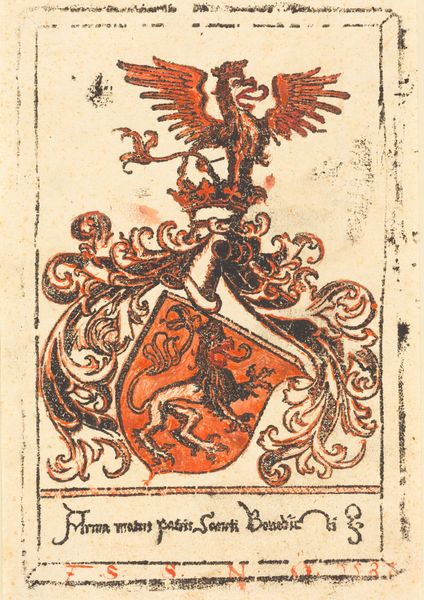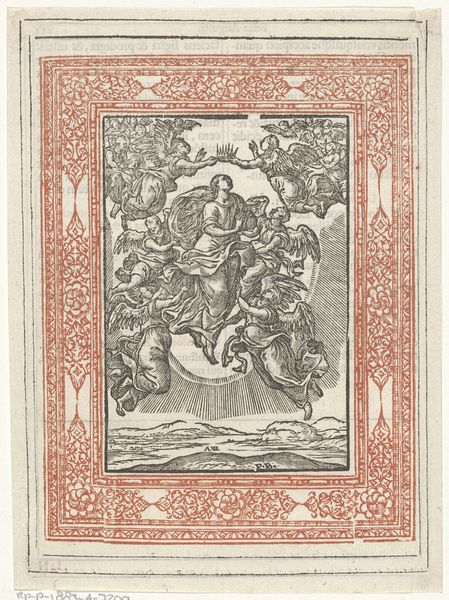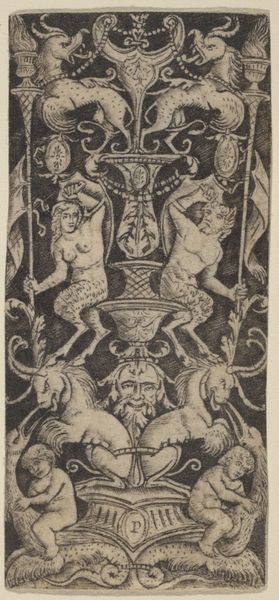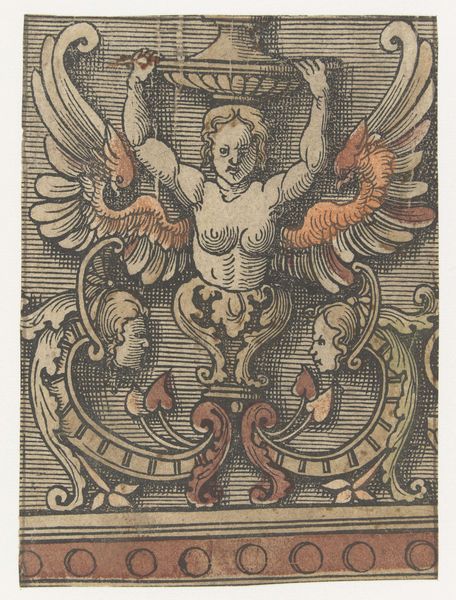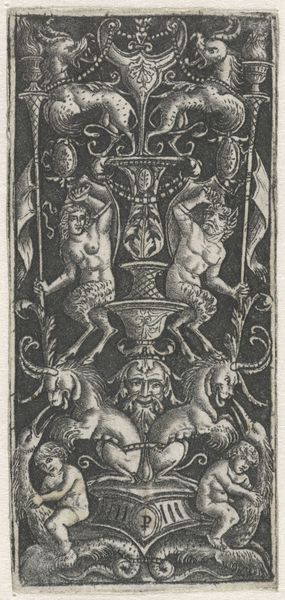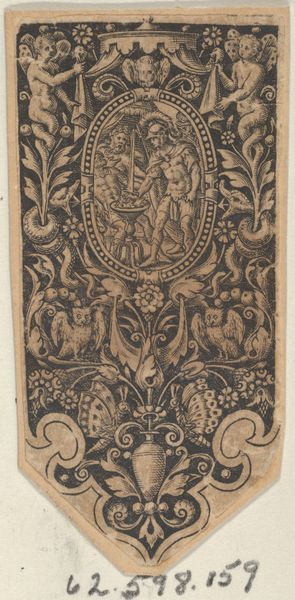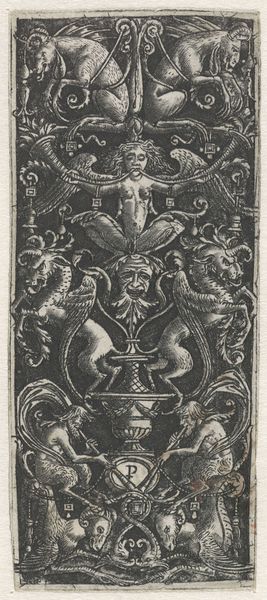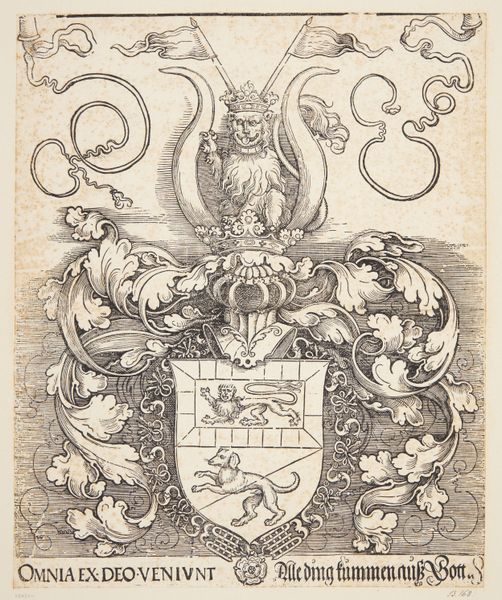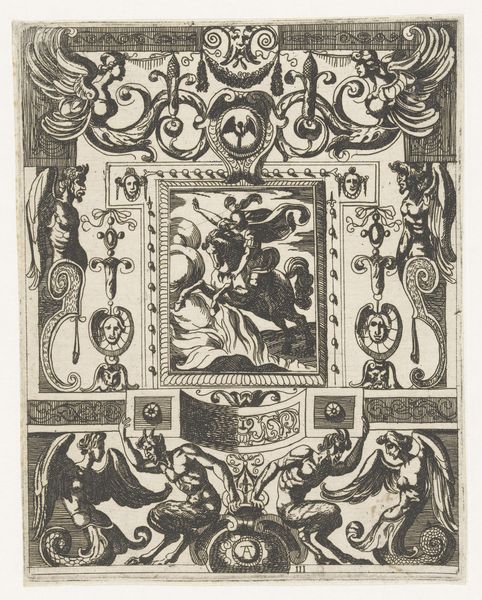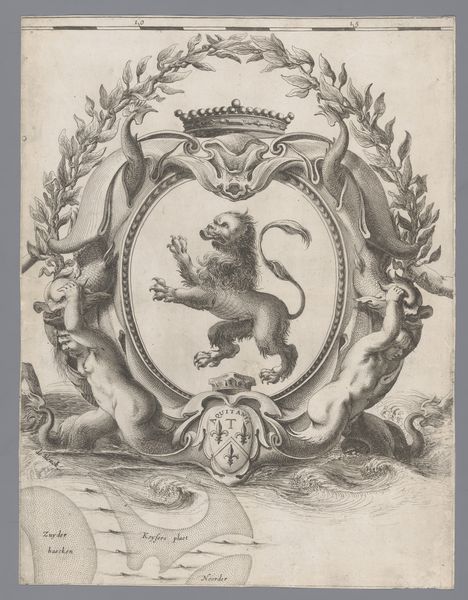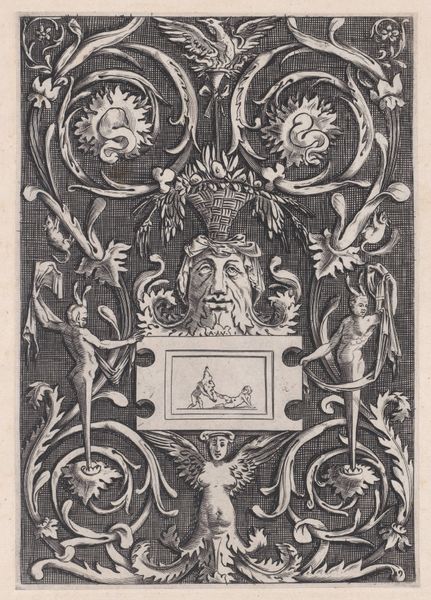
Austrian Italy, from Flags of All Nations, Series 2 (N10) for Allen & Ginter Cigarettes Brands 1890
0:00
0:00
drawing, lithograph, print, paper
#
drawing
#
lithograph
# print
#
paper
#
watercolor
Dimensions: Sheet: 2 3/4 x 1 1/2 in. (7 x 3.8 cm)
Copyright: Public Domain
Curator: This intriguing piece is called “Austrian Italy, from Flags of All Nations, Series 2 (N10) for Allen & Ginter Cigarettes Brands,” created around 1890. Allen & Ginter, the makers of cigarettes, were based in Richmond, Virginia, and made various collectible cards. This one uses lithograph, print and drawing techniques on paper. Editor: The colors are striking – the red, green, and gold flag really pops against the dark, intricate ornamentation at the bottom. It almost feels like a miniature medieval tapestry, even if the print is clearly industrialized. Curator: Exactly. Allen & Ginter employed a variety of techniques to appeal to consumers and cultivate a particular image. This image, part of a larger series, served to exoticize and brand different locations via a collected commodity. Editor: So it’s more than just aesthetics, it’s about constructing a cultural understanding—and commercializing it at the same time! Look at the central image of the winged lion with its paw resting on a bible. The materiality is a little bit thin here - clearly, not an image of power. Curator: Yes, and think about the mass production of these cards. These wouldn't be hung in a museum. It's advertising ephemera, a commentary on empire in bite-sized, disposable form meant to be collected and consumed. It's such a compact expression of larger socio-political themes. Editor: It is a pretty direct signal of late nineteenth-century commerce relying on the appropriation of culture through images to push product. The ornate gold details mimic aristocratic design, even if the paper it is printed on does not speak of riches! Curator: Ultimately, looking at "Austrian Italy" allows us to question how cultural imagery, and objects more broadly, are transformed and commodified within social structures. Editor: I will remember the contrast of this small printed image next to the world empires it represented. Thank you!
Comments
No comments
Be the first to comment and join the conversation on the ultimate creative platform.
